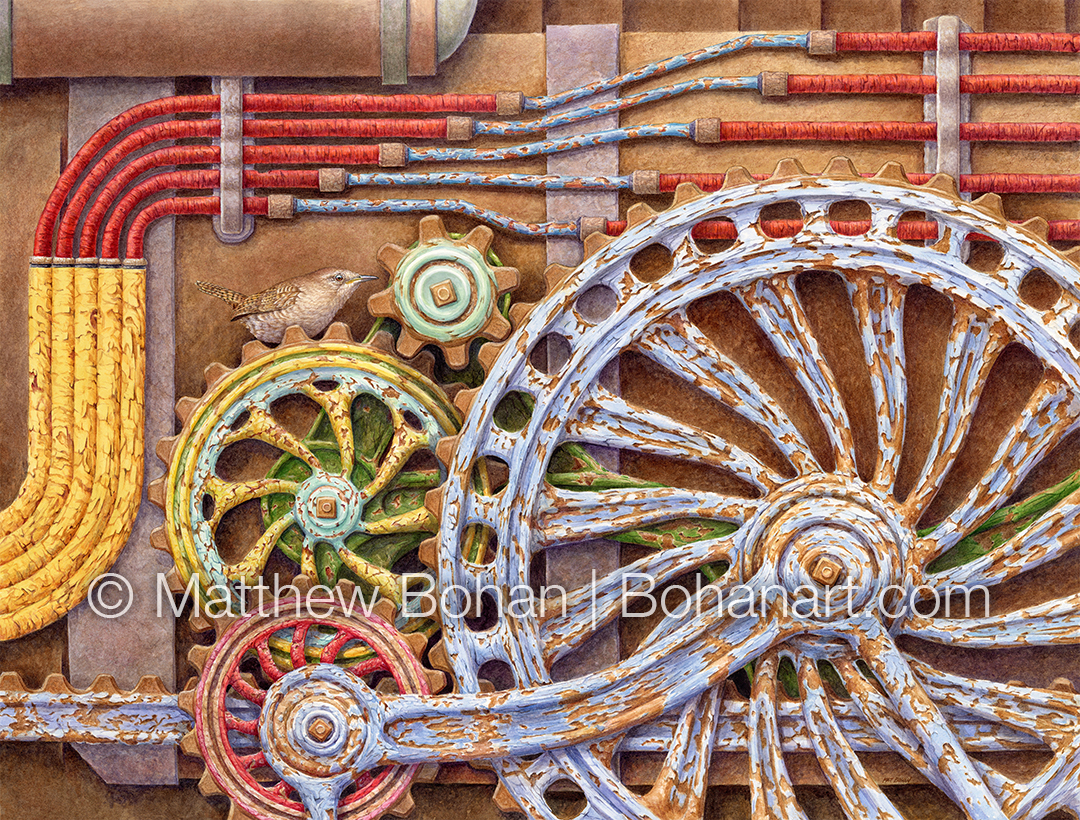
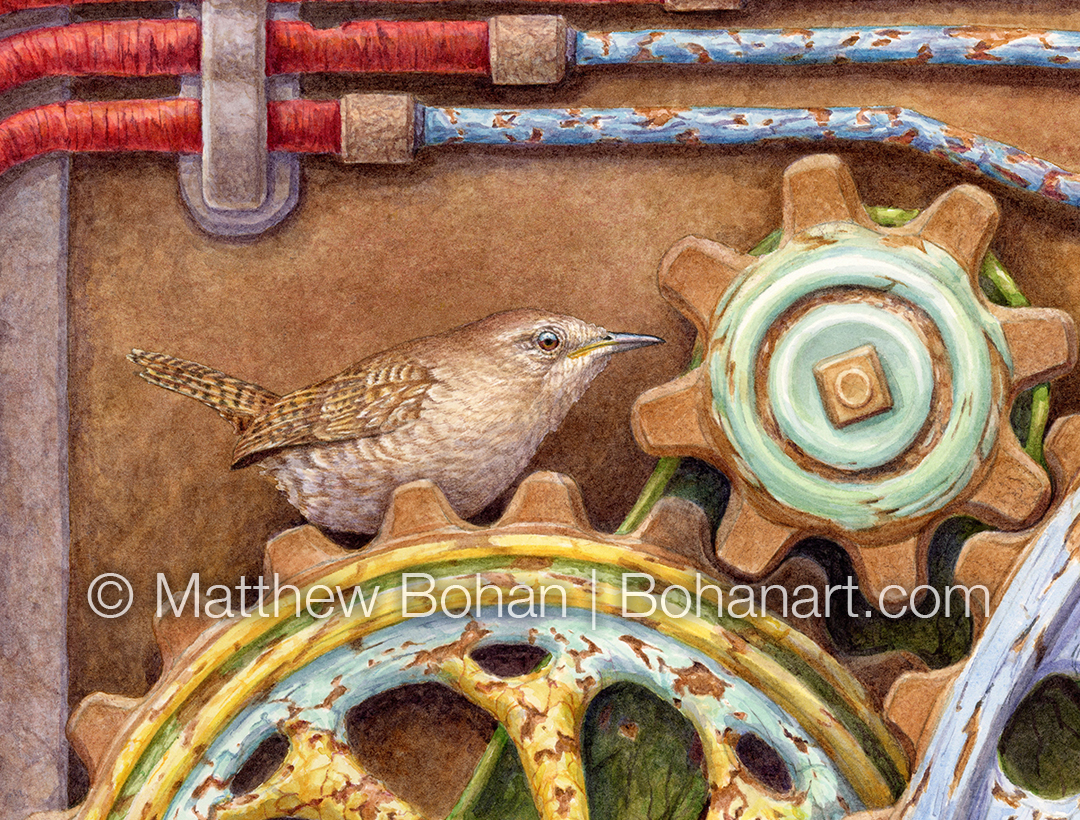
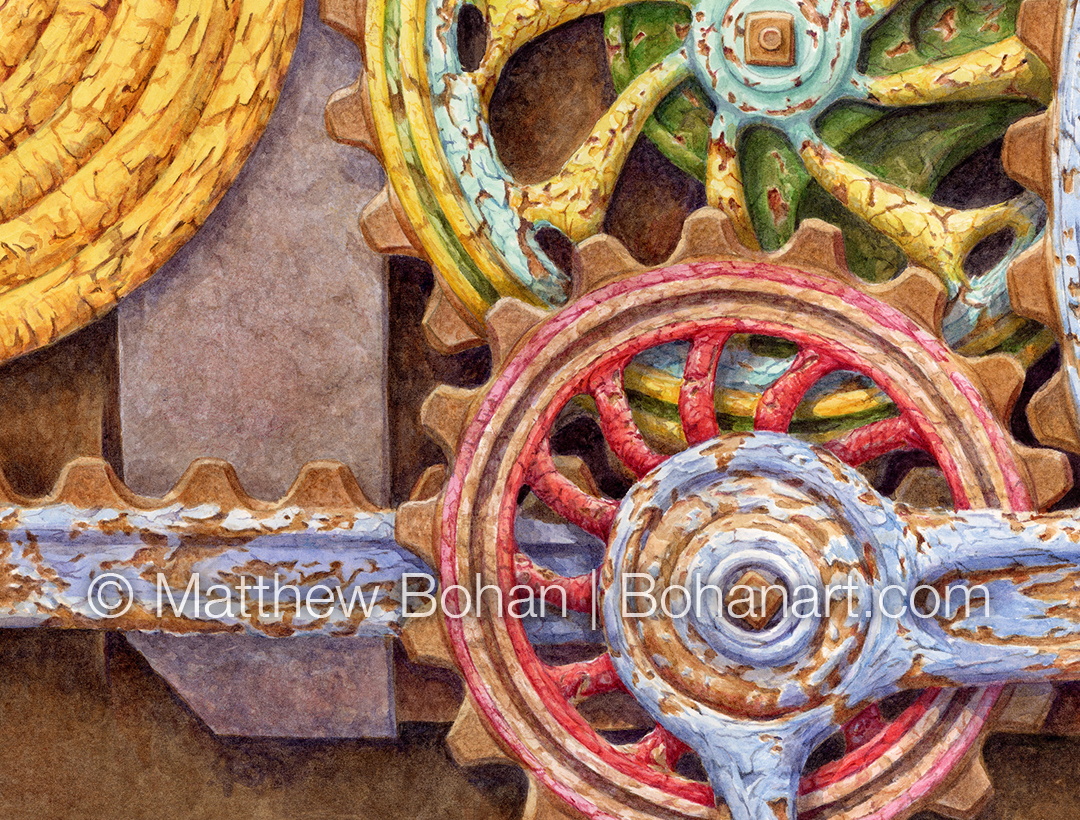
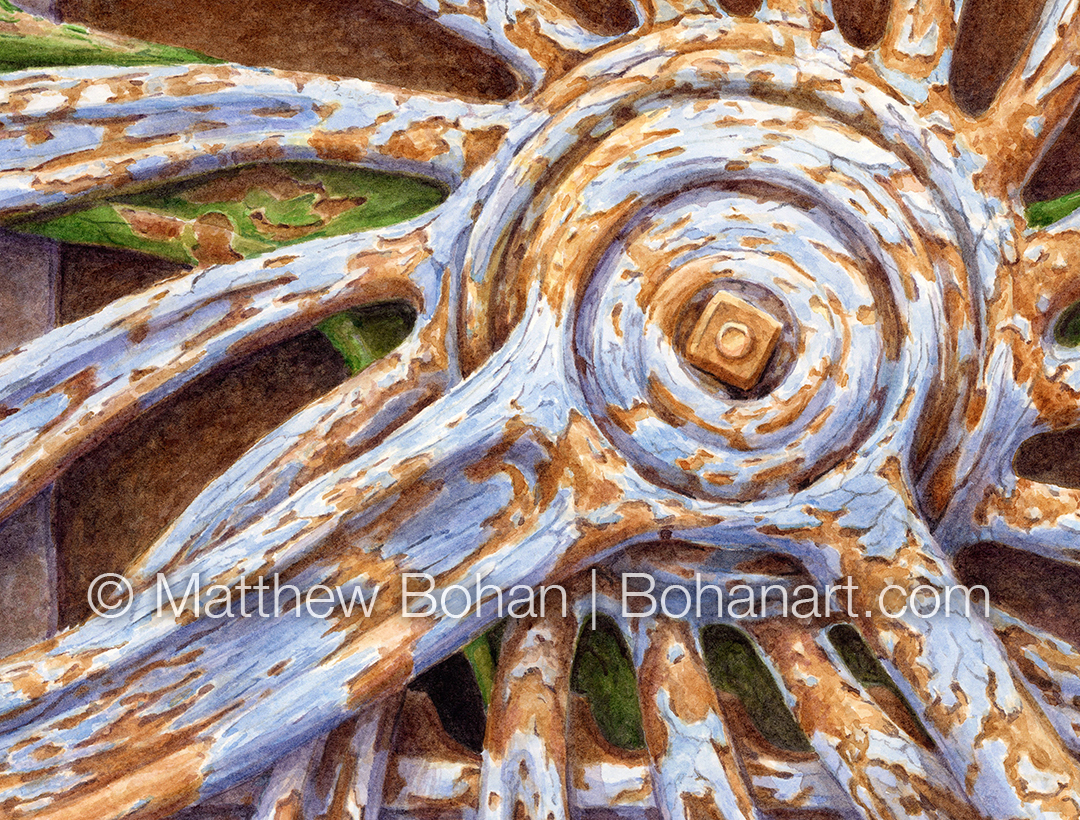
Despite the fact that Northern House Wrens are common birds, this is my first time painting one. I think part of the delay was that these particular wrens leave me a little conflicted. Some of their behaviors, such as their insistent, chattering call, make them seem a bit obnoxious, while other behaviors are fascinating. Made up of drab gray browns, their plumage lacks the visual appeal of other wren species. The cutest wrens in our area are probably the Winter Wrens, while the most handsome might be the beefy Carolina Wrens.
What I don’t like about House Wrens is that, despite their tiny size, they are bullies. Not only will they evict adult bluebirds from nest boxes, but they also will invade nest boxes and poke holes in the eggs. They are also known to drag other birds’ nestlings out of the boxes. I used to have successful Eastern Bluebird boxes in our yard before House Wrens destroyed their eggs. That is hard to witness.
On the positive side, they are certainly interesting. You can tell if a House Wren has set up shop in a nest box or cavity because it will be packed full of twigs. They are kind of like the Fred Sanford of birds, hoarding away what looks to our eyes as junk. The nest cavities are stuffed with small sticks and detritus. In with all those twigs are feathers, grasses and mosses as well as are other oddball goodies like shed snake skins and an occasional cellophane wrapper. Stranger yet, I’ve found small bones and often spider egg sacs. It’s been theorized that wrens bring in the egg sacs so the small spiders that hatch out will eat any mites in and around the nest. That is some clever parasite control.
While Northern House Wrens readily use nest boxes and natural cavities, it isn’t unusual to find their nests in other places. They can be found in cardboard boxes, tin cans, old boots, abandoned machinery, the pockets of coats stored in open garages and barns, and stranger yet, in crazy locations like skulls.
I have been focusing on smaller works lately but decided to take on this larger 18×24-inch painting. About 25 years ago I did a painting of a House Finch on a tractor, which I thought was a fun image. This was a bit of a revisit to what I liked about that one, just injecting more color movement and detail. All the cracked paint did start to wear on me. After about 40 hours I was ready to move onto something else. Normally, I enjoy the painting process the whole time.
I didn’t have the perfect photo reference for the steam engine gears I pictured in my head, so I created a lot of models in 3D and then textured and arranged them until I had a composition I thought would be fun. When designing the gears and machinery, I chose a very flattened perspective by using a long focal length lens in my 3D-rendering software to amplify all the geometric shapes in the frame. I chose to change up much of what I had in the 3D rendering when making the final painting.
After working on a large, detailed watercolor like this one, I’m ready to paint a few smaller pieces again!
✦ ✦ ✦
Here are some links of note, including a couple of new ones:
- Bohan Art’s NEW print-on-demand shop
- Bohan Art newsletter
- Bohan Art Blog RSS feed
- Bohan Art social media
Finally, if you’re interested in buying the original watercolor of this or another painting on this site, let me know. Prints, licensing and commissioned work are also available.
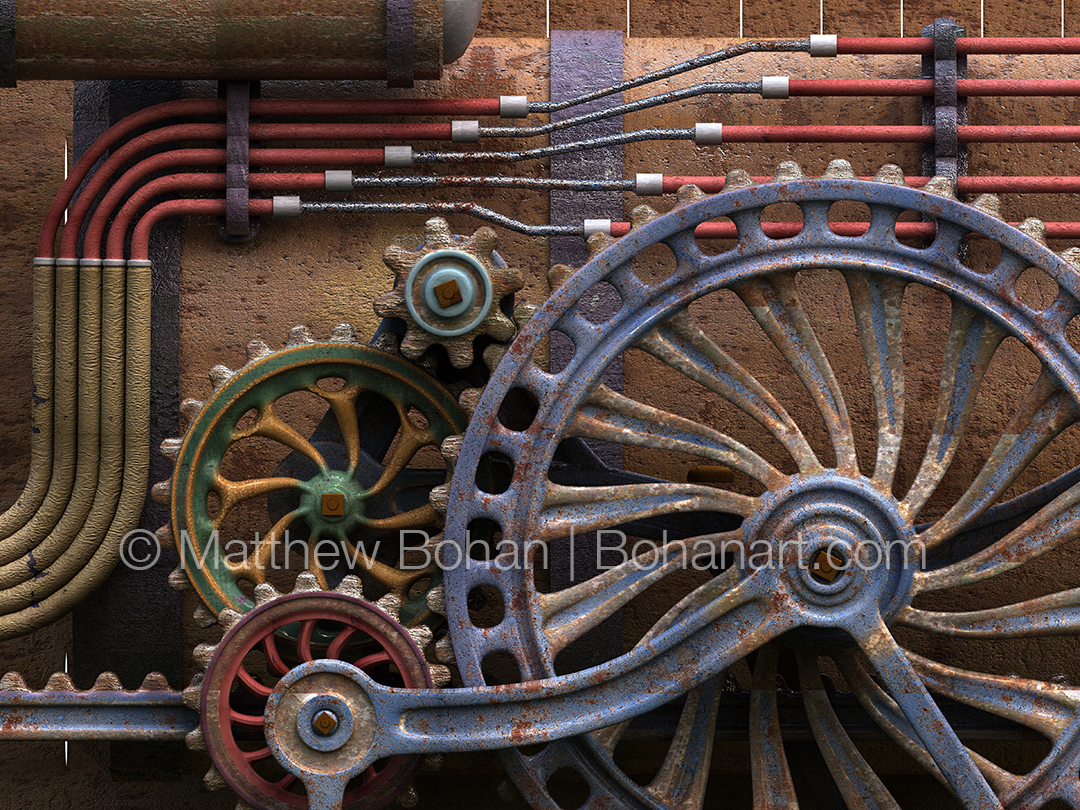

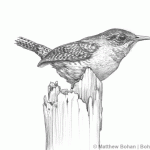
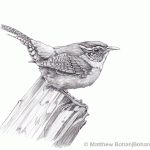
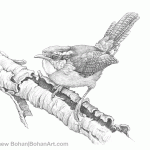
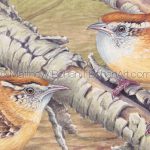
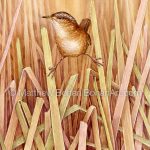
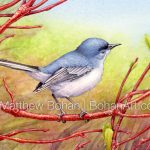
Leave a Reply